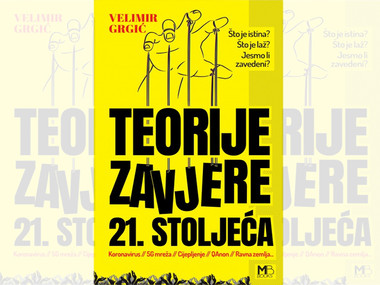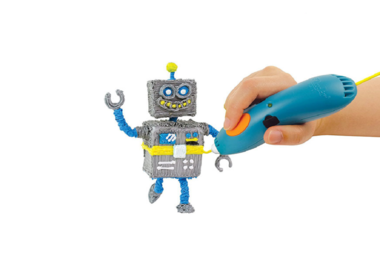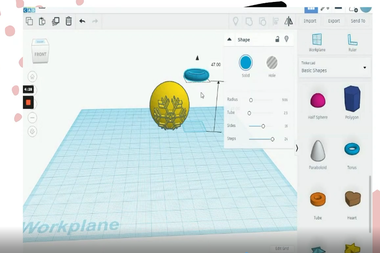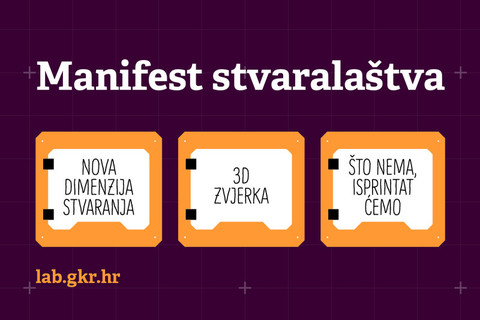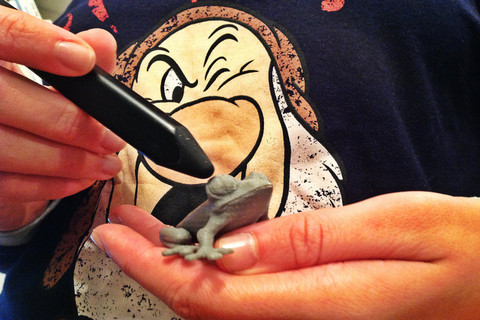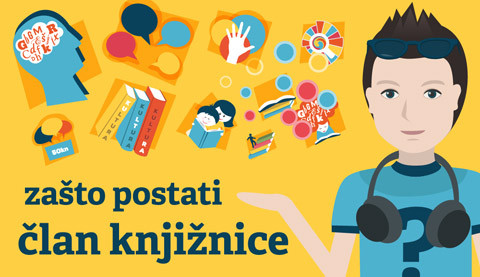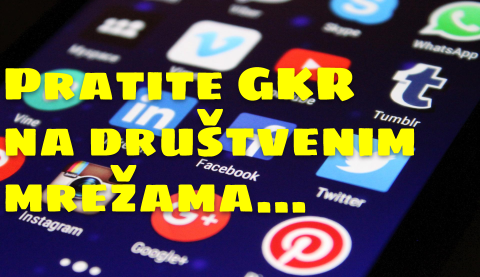"This is my Cultural Heritage": Old Postcards Framework Printed by 3D Printer and Inspired by Europeana
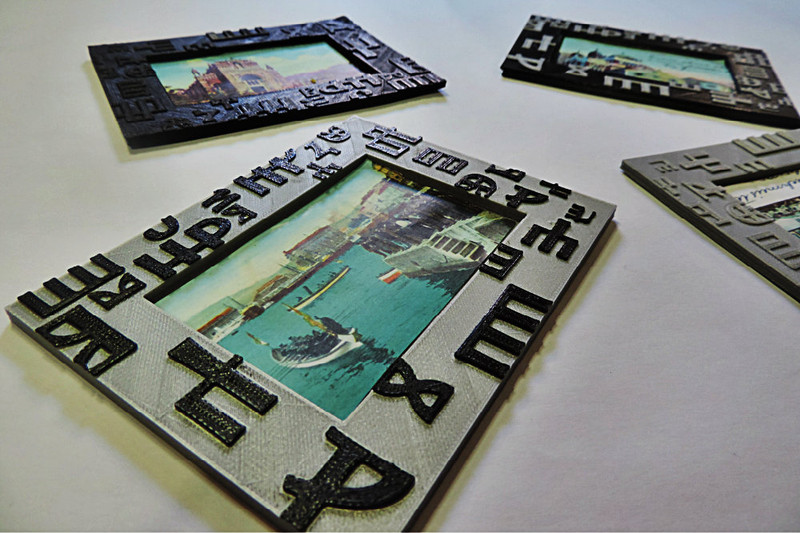
The LoCloud Competition: My Local Heritage entry is submitted by designer Filip Cvitić and student Nikola Ugarković with the originally designed postcard framework inspired by the Croatian cultural heritage and Europeana, all with the assistance of 3D print technology.
We haven't introduced ourselves, and we do not want to be impolite.
We are...
...Filip Cvitić, a designer and enthusiastic fan of the Glagolitic alphabet revaluing and its use in new shapes who, for that reason, created special Glagolitic font.
...and...
Nikola Ugarković, student of Croatian language and Computer Science student, and above all a big fan of 3D models design.
Now we can move further. First, we shall introduce you to Glagolitic script also called Glagolitsa, then we shall present our idea and how it was shaped and at last how we realised it in practice.
Old European Letter...
Each nation is defined by its language, script, history and living space. Language and script are fundamental determinant of each nation and its national identity and without them identity can be lost. Glagolithic alphabet got its name after the forth letter in alphabet, G "glagolju" that means to speak, to say, to talk. Glagolithic letter S also meaning to speak to talk. It also symbolises intellect and reason as well as word and logos. Therefore it is possible to define Glagolitic alphabet as script of reason i.e. wisdom.
Glagolitsa took part in all social segments of national existence (liturgy, law, science, art and literature) that proves sovereignty of national language and script. Many theories have been developed regarding beginnings and genesis of Glagolitic script. Until today, the most common view in scientific circles is that Glagolica is completely new script with some traces of oriental stylisation made by one man, Konstantin (Ciril) born in Thessaloniki (Nazor, 2008. page 14).
Glagolitics alphabet and Old Church Slavonic liturgy took roots in Moravia, Czeckia, Bulgaria, Panonia, Macedonia, Bosnia and Croatia, and there are proofs that in Russia first church texts were transcribed form Glagolitic matrix.
In 12th century Glagolitsa disappeared in all other countries but Croatia. From 13th century onwards only Croatian people were developing their own versions of the Glagolitic script (angular and fast-handwriting Glagolitsa) and transferred it to publishing set of letters in Gutenberg's time (14th and 15th centuries is golden age of Glagolitsa).
Tradition of the Glagolitsa script lasts for a thousand years showing its unique value.
Glagolitic alphabet survived many transformations regarding typography and in this aspect functions very much differ from Latin script. There is upper-case, small caps, numbers but there are no special signs for them, there are ligatures, and a few punctuation signs like paragraphs and cross sign.
Tha basic shapes of glagolitic script are: triangle, circle and cross. Numbers in Glagolitsa were made by putting a dot before and after the letter. Glagolitc "az" (‘a’) with dot before and after it meant number 1, "buki" (‘b’) meant number 2, vidi’ (‘v’) meant number 3 etc. Numbers from 11 to 19 were formed by special rule. Positional numeration is opposite than usual: Ones are first on left side, Tens are second and this rule is following language ("two on ten" = 12). This way of writing numbers is true also for Hundreds and thousands (for instance 112 or 1012). But from number 20 onwards the position of numbers is same as in Arabic numbers. To be clear that it is a number, not a letter, dot is used before and after the sigh. Letter is a symbol as well this is giving one more level of communication. Each letter had several meanings beside its sound sign. Letter ‘az’ (‘a’) signified one man, but Christianity as well. ‘Buki’ (‘b’) signified God and house, ‘vidi’ (‘v’) knowledge and beauty, ‘jest’ (‘e’) creation etc. So, it was not enough for reader to read letters representing sounds, but one needed to understand the context and what the author wanted to say.
Described features give Glagolitsa potential for multidimensional coding as well.
Beside representing sounds in spoken language Glagolitic letters also have their own name. If we write or read the names of the letters in their alphabet order we get the sentence that can be interpreted like this:
I, who am literate and educated and posses knowledge, am aware of my responsibility to benefit others.
This sentence is showing culture and civilisation being aware of itself, being aware of strength and dignity of its own language. Deep theology is summarized in Glagolitic alphabet and it sees all people as equally valued with same rights.
Openness of the people who were using Glagolitsa to other scripts is unique case in European culture, both west and east, as it can be seen on Baška tablet. Significant mix of glagolitsa, Latin (Cyrillic) letters on tablet: O, N, I, T.
Considering all characteristics described, Glagolitsa can be seen as script that promotes tolerance and equal evaluation of all European cultures in same way. Therefore, the old script s used in creating a product that can promote cultural heritage of every European county.
Let's take a walk...
3D printing at street as inspiration
Bearing in mind all that was mentioned earlier, on the Ineternational Literacy Day, 8th Sept 2015 we gathered in front of Childrens Department of Rijeka City Library. It was an unusual sight – on sidewalk there was a 3D printer printing glagolitic letters. The letters were 3D modelled and especially designed as an educational tool for learning glagolitic script. Many children with parents came along and they were playing with Glagolitic letters, finding out which Latin characters they represent, remembering them and writing their names with this ancient script.
This particular scene inspired us and we asked ourselves how to bring Glagolitsa to family home in more applicable way and whether we can use 3D printing to assist us in it.
Looking at the inspiring photographs and searching through practice on the Internet we were reasoning what to do...
Photo: a parent with children playing with 3D Glagolitic alphabet letters in front of the Children's Department
Research
During the searching days in early September browsing Europeana as the greatest home of the world cultural heritage was inevitable. We knew the facts, but we didn't know what is available regarding cultural heritage of Rijeka and Croatia in Europeana. We were specially interested in Glagolitsa because we wanted to see if there are representative works and whether we can learn something new. We were rather satisfied – we found works of the greatest scientists in this field, but we were not satisfied because there could be more, so much more..
Besides, in Rijeka University Library there is a very interesting exhibition of Glagolitsa that would be lovely to see in digitized 3D shape and available to the whole world.
In any case these were the so cold "searching days".
We got the idea!
And then the ideas burst and the path we wanted to take became ever more clear to us.
Searching Europeana we realised what a huge number of photographs and old postcards are available there. Besides historic value some of them are very aesthetically interesting, attractive. But they all live on severs, hard discs, screens and not in our living rooms, desks…
They are missing shades of applied art.
We wondered how can a common library member and citizen make it a part of his/her ambient or suitable for a gift to a dear person.
Surely, some sort of framework is needed. But what kind of framework it should be? Usual, plastic China shop article? Why not something original and ours, we wondered. The puzzles matched and it was decided– let's design our own framework with text in Glagolitsa: “This is my cultural heritage”. This way we shall achieve interest for further research of Glaglolitsa story, and the story behind the Glagolitic alphabet and its connection to its other values will provide new experience that they will follow further. Original and with cool technology such is 3D printing.
Getting to work it out was a next phase. Using the existing font Epistula Croatica made upon authentic sample from the famous liturgy book Misal po zakonu rimskoga dvora published in 1483 we made first sketches of the pre-thought framework.
The adventure of 3D modelling and printing
By making sketches we were still far from finishing the job. To make real framework samples we needed to make 3D model which is not a five minutes job. And we committed ourselves to this challenging job because we were motivated by doing something useful and educational.
We nicely documented the process of making it real…
and moved closely to sites we had seen in our imagination.
We shall not hide that pictures of a model looked were inspiring to us and we were happy with work done.
But we have already known from the 3D printing experience that reality does not always look like what we can see on the screen. Very often what looks good on the screen looses its magic in reality.
So, the machines needed to be turned on. Rijeka City Library is one of the rare places in the city where you can use 3D printers for such experimental and testing phase.
Setting the 3D printer increased our expectations. Shall it turn out well?
3 D experts know that this is not a 5 minute job. 3D printing lasts, depending on printer and the quality need to be achieved.
After a few hours of printing and changing filament in time to achieve the special colour of Glagolitic letters and to distinguish text better the outcome was there. In our hands we held a postcard framework saying “This is my cultural heritage”!
Let's give some content to the form now.
After being satisfied with the achieved outcome with plastic material the plastic needed to ennobled, to be filled with content i.e. items we started to think about at the beginnings. W got back to Europeana. Browsing hundreds of photos and postcards we were interested in content about Rijeka.
We have been searching with patience until we found motifs we liked.
Dear friends, we are presenting the postcard framework “This is my Cultural Heritage”
We hope that you like the first solution of ours. It is our wish to frame in this original way as many Europeana images as possible.
As it can be seen, Glagolitsa leaves much space for researching, its uniqueness in world and role int the past give it great potential. Because of three communication levels that Glagolitsa has, in the aspect of semiotics, letters, numbers and symbols, graphic forms characteristics and each letter meaning, the script has a potential for multidimensional coding. Because of the values it promotes it is a showcase in the culture field and in the country where it developed it can be inspiration for EU projects.
If European citizens are more aware of own special values and would believe in them they can be more proud of their national identity and presented to clearly to the world, they will not have to worry about negative consequences before them.
When such goals come along with modern technologies like technology standing behind Europeana and some spice is added with something like 3D printing, the outcomes can be interesting for common people in everyday life.





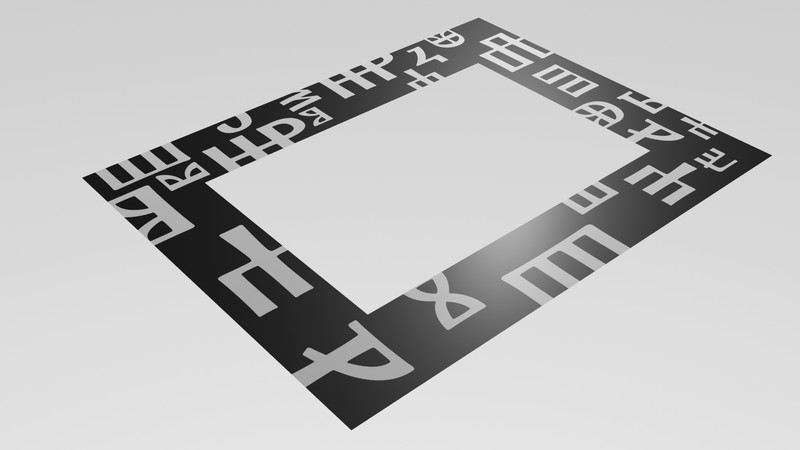
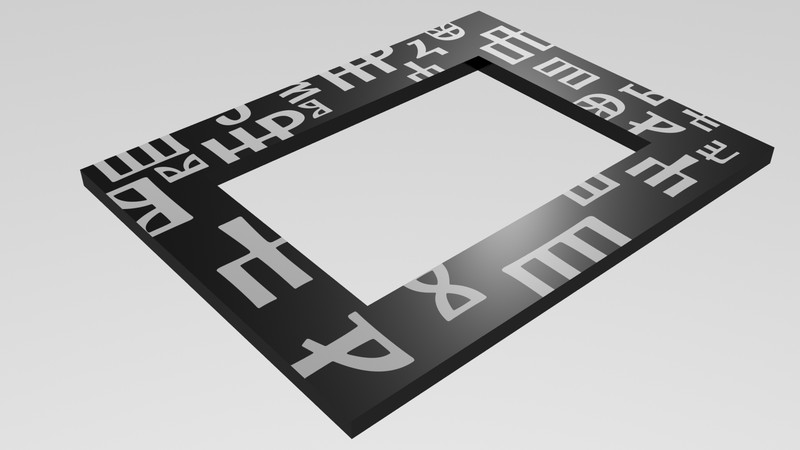
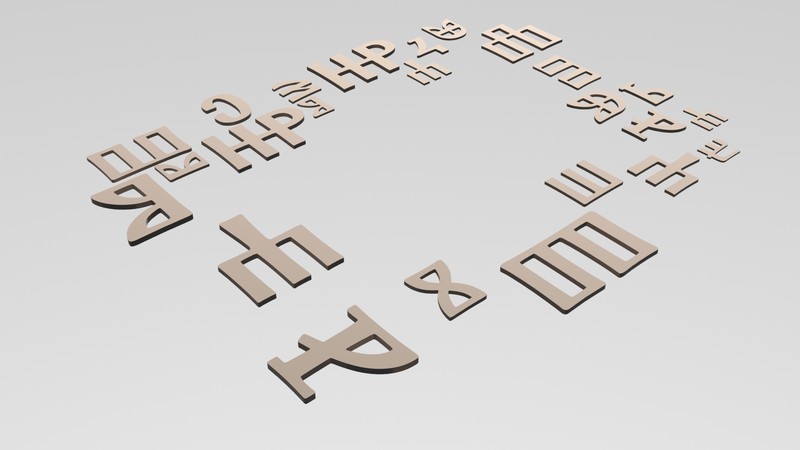
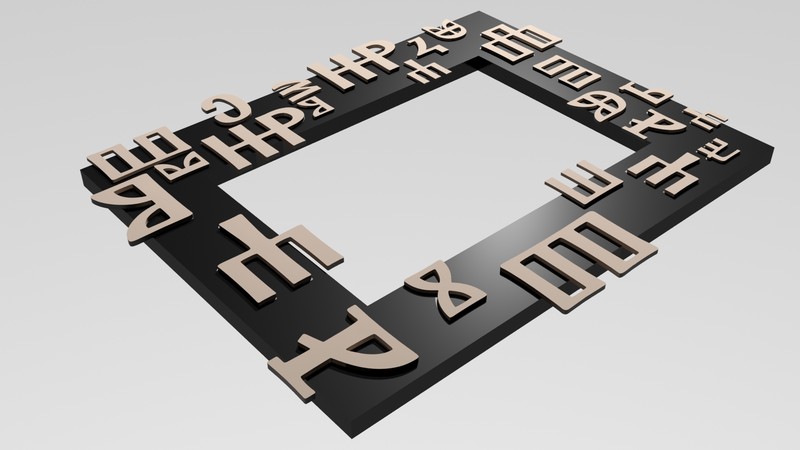
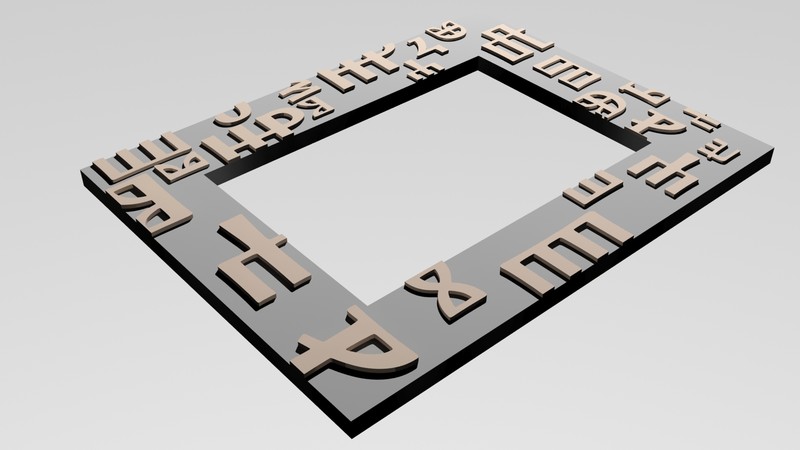



















![[Iz Rasadnika.fyi] Saša Ceci i Luka Čičin-Šain o ulozi znanosti, pandemijskim lekcijama te važnosti knjižnica](/var/plain_site/storage/images/magazin/teme/iz-rasadnika.fyi-sasa-ceci-i-luka-cicin-sain-o-ulozi-znanosti-pandemijskim-lekcijama-te-vaznosti-knjiznica/248175-1-cro-HR/Iz-Rasadnika.fyi-Sasa-Ceci-i-Luka-Cicin-Sain-o-ulozi-znanosti-pandemijskim-lekcijama-te-vaznosti-knjiznica_article_line.jpg)

